 Kabuto Jinja under the Shuto Expressway, Chuo-ku, Tokyo. This shrine faces the Tokyo Stock Exchange. From the book Earth, Water, Fire, Wind, Emptiness: Tokyo Landscape. Click on the image for a larger view.
Kabuto Jinja under the Shuto Expressway, Chuo-ku, Tokyo. This shrine faces the Tokyo Stock Exchange. From the book Earth, Water, Fire, Wind, Emptiness: Tokyo Landscape. Click on the image for a larger view.
Category Archives: Tokyo
Sacred Spaces, Part 2
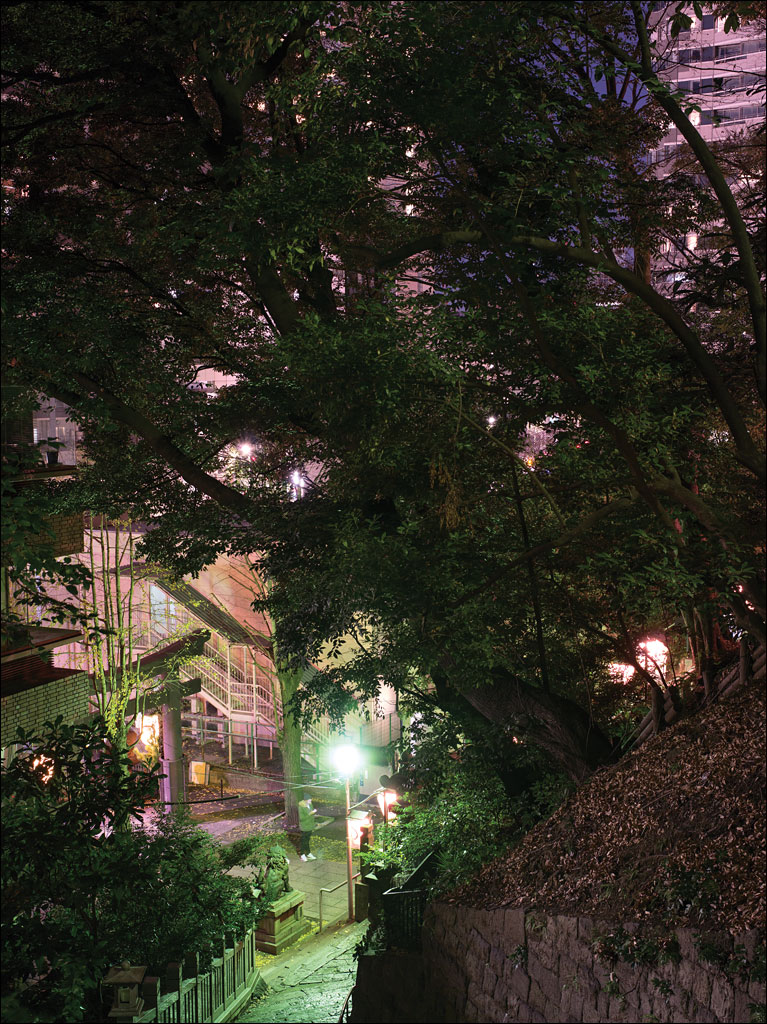 The entrance to Atago Jinja, founded in 1603, marked by the shinto Tori gate or Torii. Built on one of the highest points in Edo overlooking the bay (26 m, 85 ft.), the shrine was famous for its views. Today, that view is obscured by buildings. The fire god Homusubi-no-mikoto is the main deity, reflecting how deadly and feared fires were to the Edo population. From the book Earth, Water, Fire, Wind, Emptiness: Tokyo Landscapes. Click on the image for a larger view.
The entrance to Atago Jinja, founded in 1603, marked by the shinto Tori gate or Torii. Built on one of the highest points in Edo overlooking the bay (26 m, 85 ft.), the shrine was famous for its views. Today, that view is obscured by buildings. The fire god Homusubi-no-mikoto is the main deity, reflecting how deadly and feared fires were to the Edo population. From the book Earth, Water, Fire, Wind, Emptiness: Tokyo Landscapes. Click on the image for a larger view.
Sacred Spaces, Part 1
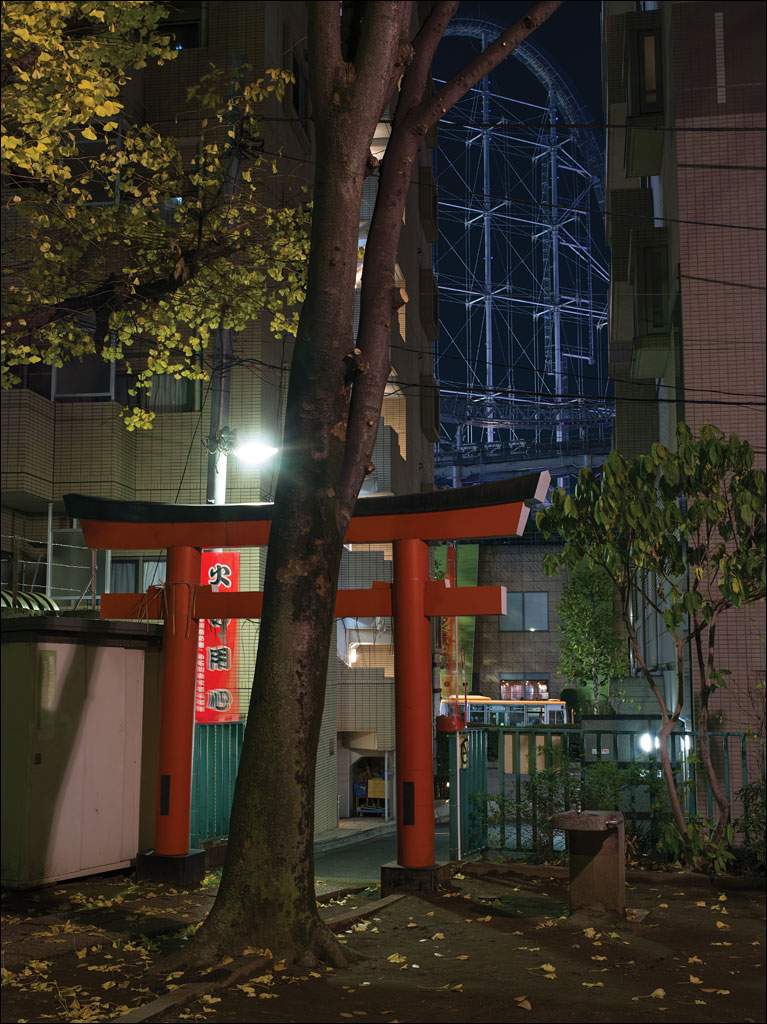 Shusse Inari Jinja, Bunkyo-ku, Tokyo. The shrine was founded in 1620 by Lady Kasuga, a powerful woman in the Tokugawa Shogunate. The sound that periodically sweeps through the shrine is a cross between wind and thunder—the noise of the Thunder Dolphin roller coaster, the structure in the background, as the cars pass the gap between the buildings. From the book Earth, Water, Fire, Wind, Emptiness: Tokyo Landscapes. Click on the image for a larger view.
Shusse Inari Jinja, Bunkyo-ku, Tokyo. The shrine was founded in 1620 by Lady Kasuga, a powerful woman in the Tokugawa Shogunate. The sound that periodically sweeps through the shrine is a cross between wind and thunder—the noise of the Thunder Dolphin roller coaster, the structure in the background, as the cars pass the gap between the buildings. From the book Earth, Water, Fire, Wind, Emptiness: Tokyo Landscapes. Click on the image for a larger view.
Tsukiji Revisited, Part 3
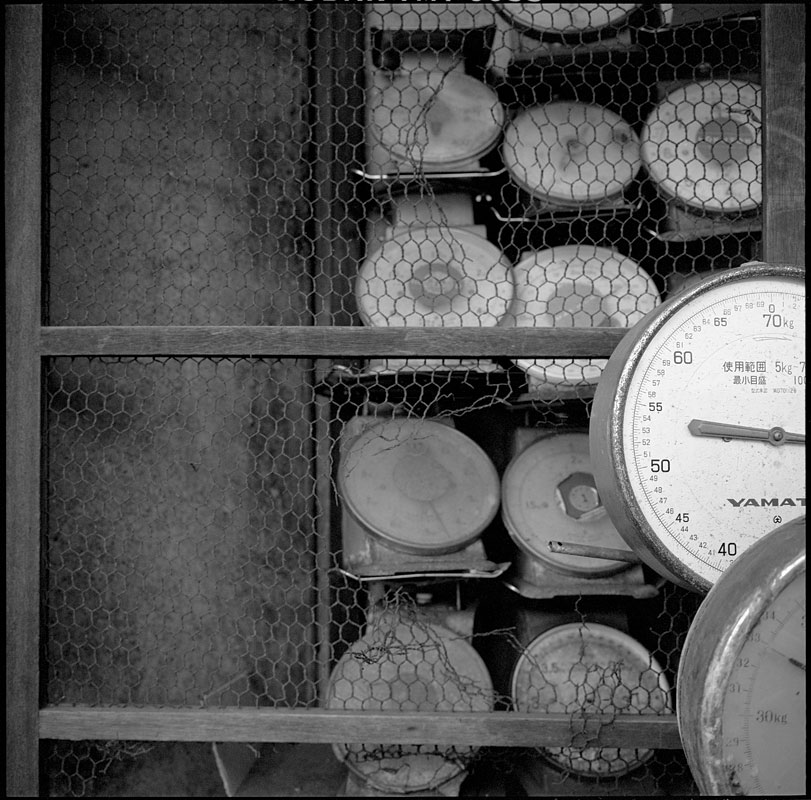 Discarded scales in Tsukiji fish market in Tokyo. From our book Tsukiji: Tokyo Fish Market Suite. Click on the image for a larger view.
Discarded scales in Tsukiji fish market in Tokyo. From our book Tsukiji: Tokyo Fish Market Suite. Click on the image for a larger view.
Tsukiji Revisited, Part 2
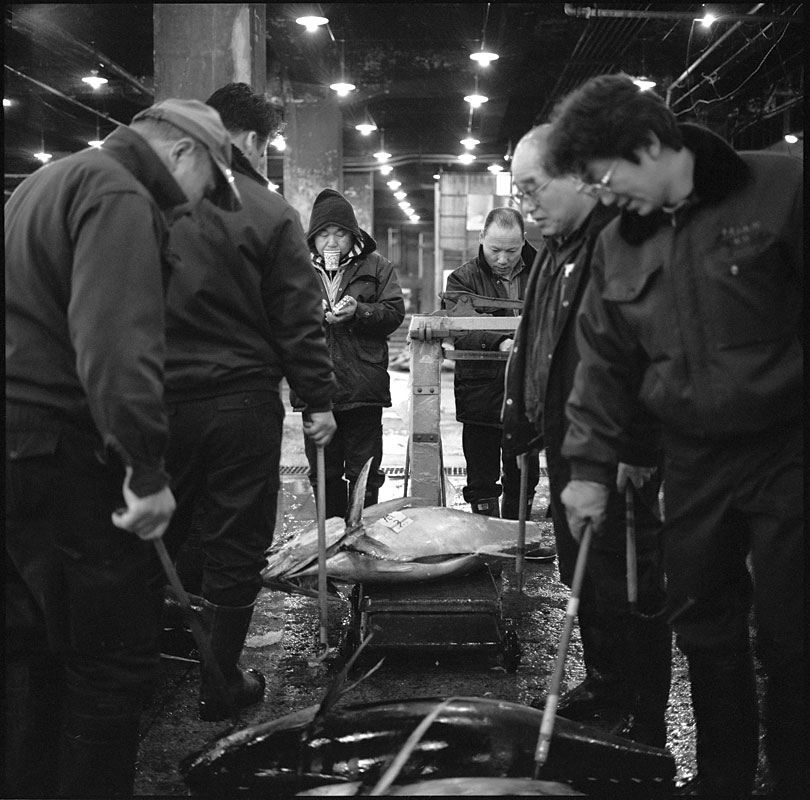 The former Tokyo Central Wholesale Fish Market in Tsukiji. From our book Tsukiji: Tokyo Fish Market Suite. Click on the image for a larger view.
The former Tokyo Central Wholesale Fish Market in Tsukiji. From our book Tsukiji: Tokyo Fish Market Suite. Click on the image for a larger view.
Tsukiji Revisited, Part 1
 The former Tokyo Central Wholesale Fish Market in Tsukiji. The market was known for its trade in tuna. From our book Tsukiji: Tokyo Fish Market Suite. Click on the image for a larger view.
The former Tokyo Central Wholesale Fish Market in Tsukiji. The market was known for its trade in tuna. From our book Tsukiji: Tokyo Fish Market Suite. Click on the image for a larger view.
Sumida River
 Ishikawajima Park at the tip of Tsukishima, an island made in 1892 from material dredged for a shipping channel in Tokyo bay. From our book Earth, Water Fire, Wind, Emptiness: Tokyo Landscape. Click on the image for a larger view.
Ishikawajima Park at the tip of Tsukishima, an island made in 1892 from material dredged for a shipping channel in Tokyo bay. From our book Earth, Water Fire, Wind, Emptiness: Tokyo Landscape. Click on the image for a larger view.
Tokyo Bay Seawall
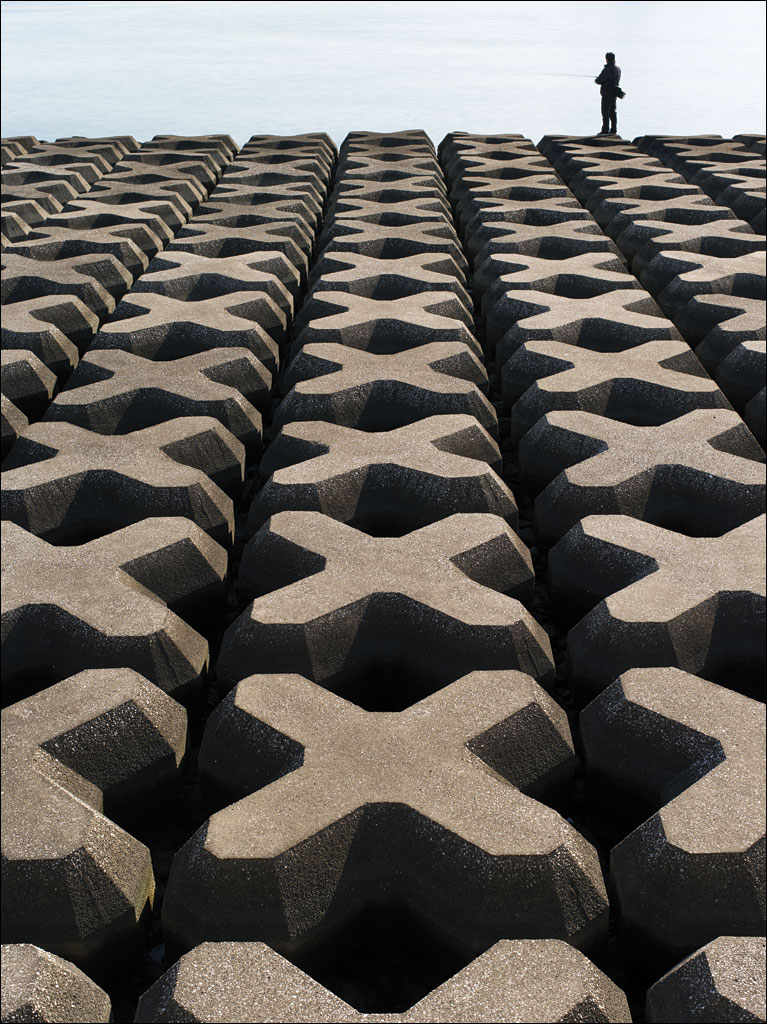 The defense along the artificial islands in Tokyo Bay. From our book Earth, Water, Fire, Wind, Emptiness: Tokyo Landscape. Click on the image for a larger view.
The defense along the artificial islands in Tokyo Bay. From our book Earth, Water, Fire, Wind, Emptiness: Tokyo Landscape. Click on the image for a larger view.
Shinbashi, Tokyo
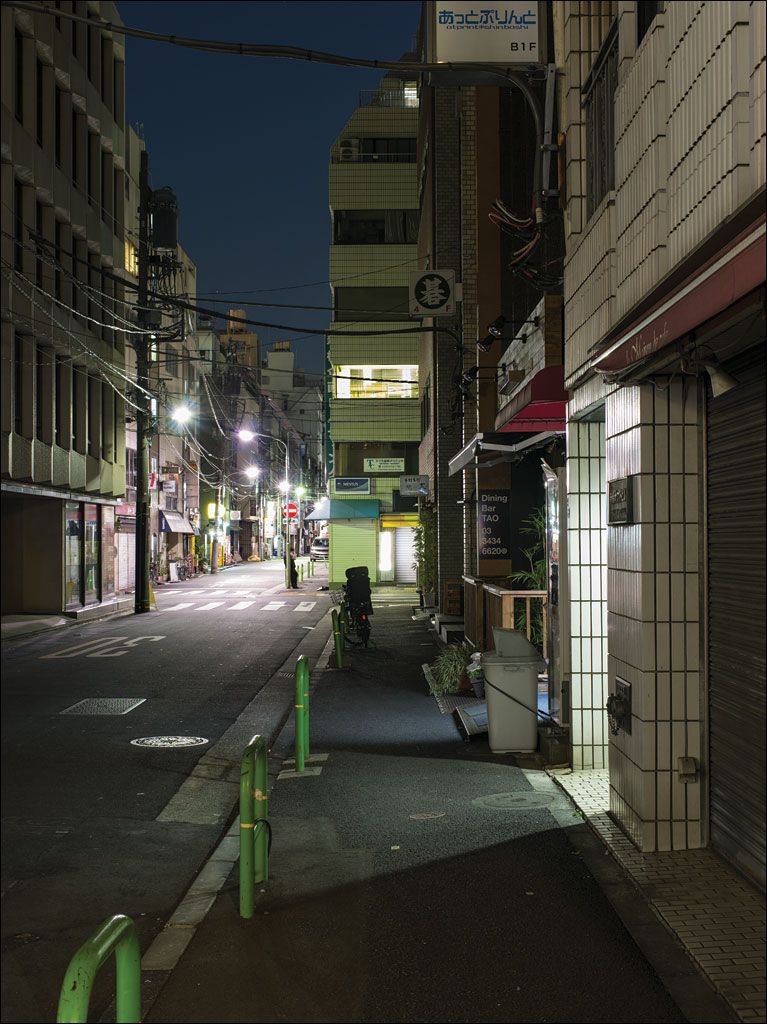 A solitary figure is standing in the usually vibrant district of Shinbashi, Tokyo. Unlike Ginza, its exclusive neighbor to the north, Shinbashi caters to the average Tokyo worker with reasonably-priced restaurants and bars. This is from our book Earth, Water, Wind, Fire, Emptiness: Tokyo Landscape. Click on the image for a larger view.
A solitary figure is standing in the usually vibrant district of Shinbashi, Tokyo. Unlike Ginza, its exclusive neighbor to the north, Shinbashi caters to the average Tokyo worker with reasonably-priced restaurants and bars. This is from our book Earth, Water, Wind, Fire, Emptiness: Tokyo Landscape. Click on the image for a larger view.
Tokyo Station
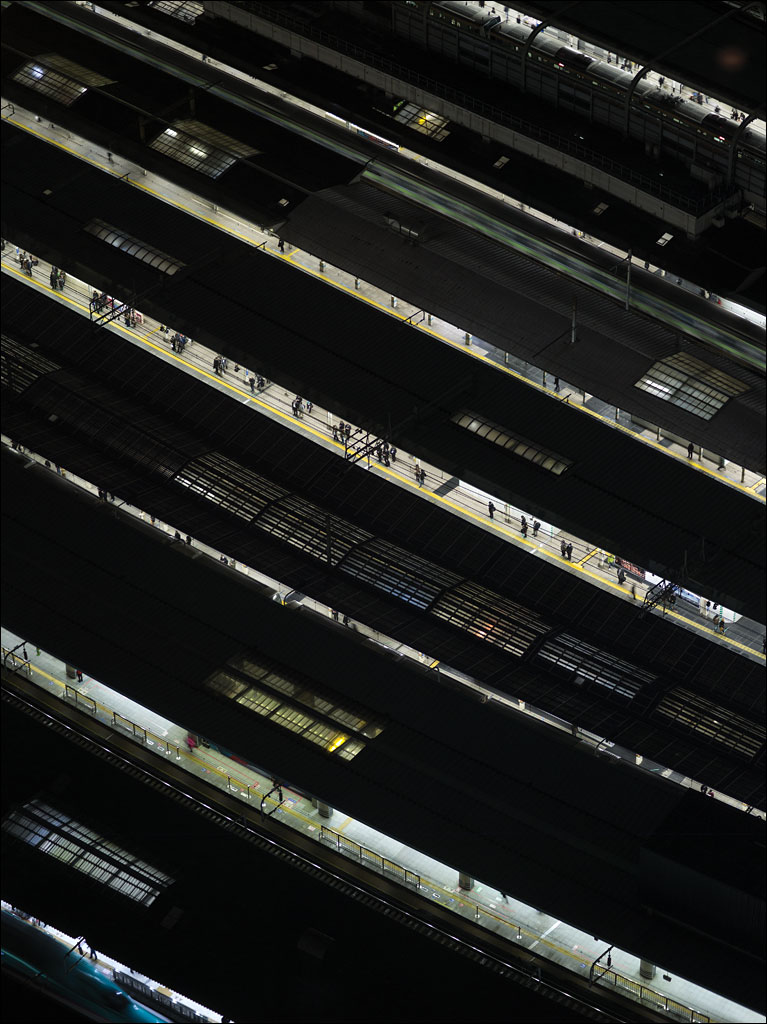 Tokyo Station at night after the rush hour. When it opened in 1914, half a million passengers used the station in the first year. Today, 420,000 people pass through daily on over 3,000 trains. This is not the busiest station in Tokyo. From our book Earth, Water, Wind, Fire, Emptiness: Tokyo Landscape. Click on the image for a larger view.
Tokyo Station at night after the rush hour. When it opened in 1914, half a million passengers used the station in the first year. Today, 420,000 people pass through daily on over 3,000 trains. This is not the busiest station in Tokyo. From our book Earth, Water, Wind, Fire, Emptiness: Tokyo Landscape. Click on the image for a larger view.
